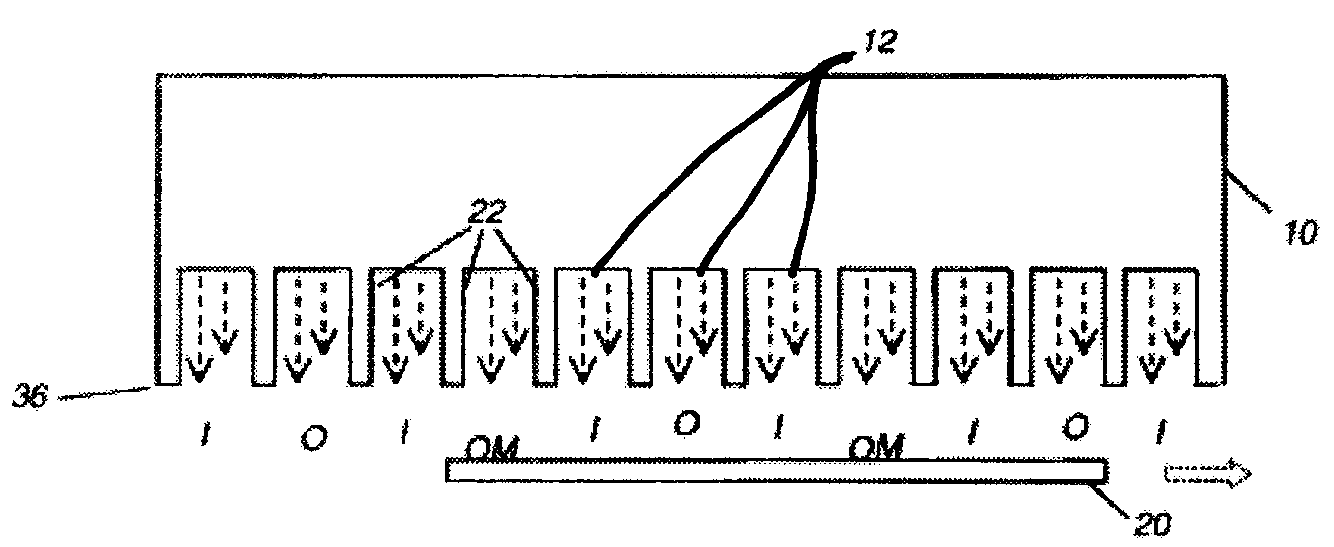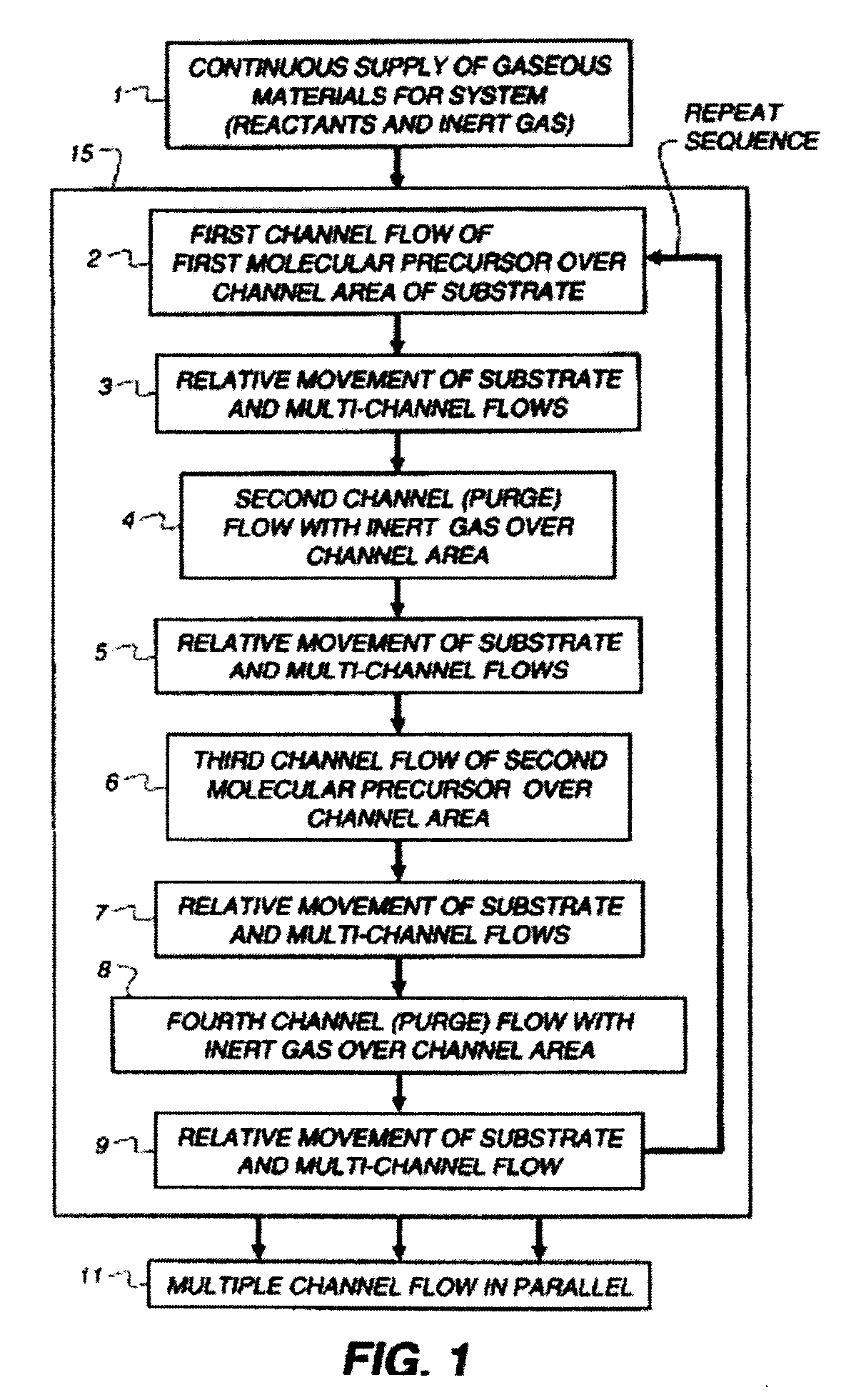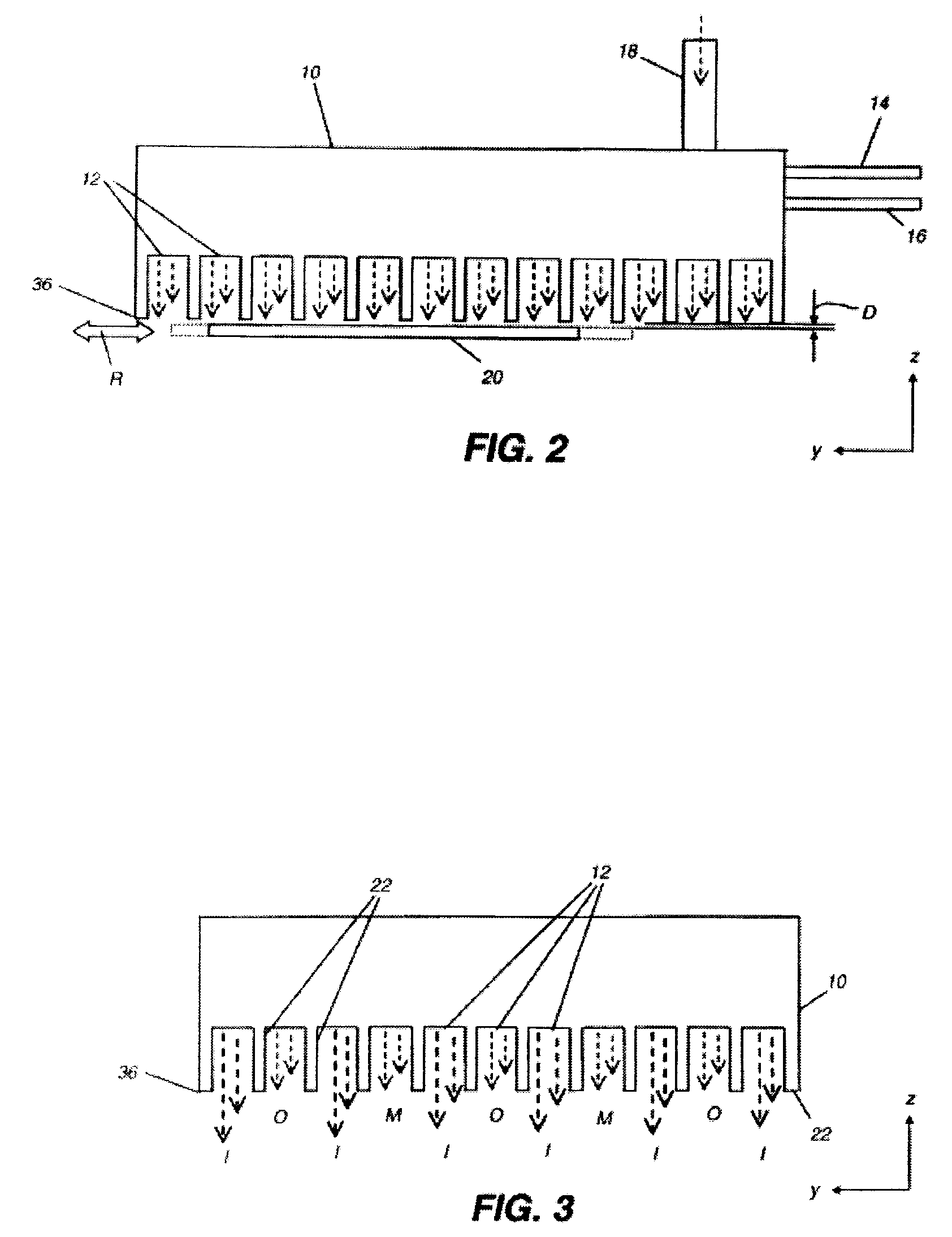Process for making doped zinc oxide
a technology of indiumdoped zinc oxide and thin film, which is applied in the direction of metal/alloy conductors, coatings, conductors, etc., can solve the problems of poor subthreshold slope and high current, and achieve excellent field-effect electron mobilities and sufficient performance properties
- Summary
- Abstract
- Description
- Claims
- Application Information
AI Technical Summary
Benefits of technology
Problems solved by technology
Method used
Image
Examples
example 1
[0219]This example demonstrates that indium oxide (In2O3 when alone) has been incorporated into the zinc oxide (ZnO when alone) semiconductor layer as an indium-zinc-oxide material. Samples prepared using the above apparatus were analyzed employing X-ray fluorescence spectroscopy on a purified, fused quartz substrate (GM electronics 63×63−040p). Table 1 below shows the flow rates of the zinc and indium precursors as well as the level of zinc and indium detected.
TABLE 1TrimethylDiethyl zincindium GasMolar FlowWeightGas FlowFlow Rate,Ratio, In / Zn,Zn DetectedIn DetectedRatioSampleRate, sccmsccmpercentage basis(μg / cm2)*(μg / cm2)**In / ZnComparative130083.70—1A1B132023%85.3None Detected—Less than 1.41C134046%66.46.60.101D138092%46.212.90.281E13160185%32.714.80.45*XRF measurement error (1σ) for Zn values is 0.3%**XRF measurement error (1σ) for In values is 1-2%
[0220]The data in Table 1 indicate that substantial amounts of In2O3 have been doped into the ZnO host using this experimental approa...
example 2
[0221]This example shows the change in crystallinity of the ZnO based semiconductor layer with increased incorporation of In2O3. X-ray diffraction was used to determine the relative crystallinity of the same coatings used in the previous Example 1. X-ray diffraction analysis is capable of determining if a material is non-crystalline (amorphous), since a perfectly amorphous material would generate no lattice peaks. In order to quantify the crystallinity of these InZnO samples, profile fitting summed the relative areas of the lattice peaks in each trace. The results are tabulated in Table 2 below. FIG. 26 is an overlaid plot of the X-ray diffraction spectra of the series in Table 2. It may easily be seen that the intensities of the peaks of the ZnO trace having zero doped In (Sample 1A) are drastically diminished in relative intensity and broadened as the In is introduced into the ZnO lattice at the highest level (Sample 1E), the latter of which is seen to be approaching a completely ...
example 5
[0229]This example describes the preparation of devices made using a range of In2O3 levels in the ZnO semiconductor layer. This experiment is similar to that described in Example 4 except that the flow rate of trimethylindium in bubbler 99 was varied from 0 to 160 sccm. The trimethylindium flow rates used varied as in Table 5.
TABLE 5TrimethylindiumAverageAverageFlow Rates, inMobility,ThresholdAverageSamplesccmcm2 / V * sVoltage, VIon / Ioff5A012.747.732 × 1095B2013.377.171 × 1095C4014.887.401 × 1095D8010.717.591 × 1095E1608.528.965 × 107
[0230]The data in Table 5 above show that as the trimethylindium flow rate is increased during the ZnO deposition that there is an increase in the mobilities up to a point (Sample 5C), and then there is a decrease in mobility at the highest trimethyl indium flow levels. On / off current ratios and average threshold voltages do not significantly shift within this series except at the highest trimethylindium flow rate.
PUM
| Property | Measurement | Unit |
|---|---|---|
| temperature | aaaaa | aaaaa |
| weight ratio | aaaaa | aaaaa |
| speed | aaaaa | aaaaa |
Abstract
Description
Claims
Application Information
 Login to View More
Login to View More - R&D
- Intellectual Property
- Life Sciences
- Materials
- Tech Scout
- Unparalleled Data Quality
- Higher Quality Content
- 60% Fewer Hallucinations
Browse by: Latest US Patents, China's latest patents, Technical Efficacy Thesaurus, Application Domain, Technology Topic, Popular Technical Reports.
© 2025 PatSnap. All rights reserved.Legal|Privacy policy|Modern Slavery Act Transparency Statement|Sitemap|About US| Contact US: help@patsnap.com



